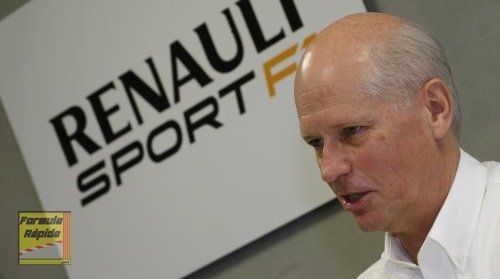What are the advantages of supplying Scuderia Toro Rosso for Renault?
While it is logical we would discuss a partnership with Toro Rosso based on our partnership with Infiniti Red Bull Racing, it was not a foregone conclusion and we have carefully considered what is best for all parties. It is clear that Toro Rosso is a well-run, established team, with impressive technical personnel and the means and potential to be a regular points contender. Renault remains involved in F1 to win and demonstrate the excellence of its products and to achieve our aims we need to have teams functioning at the highest level, which is why we are delighted to sign with Toro Rosso. Off track it will also enable us to further grow the association with the Red Bull brand to our customers worldwide. We look forward to creating a long and multi-level relationship with Toro Rosso, just as we have with Red Bull Racing.
Do you see this partnership as long-term?
Initially the contract is for three years but we intend this deal to be long-term. We want to win, but we also want to use the sport to test high level technologies that can be filtered down to our road car range. To achieve these aims we need solid foundations, and build upwards. This can only be done through stability and long-term partnerships.
Has work already started on the Toro Rosso collaboration?
As most people know, we have had open discussions with Toro Rosso for some time. When we entered into advanced negotiations, our technical departments started to share some information to get to know each other’s procedures in anticipation of the final contract. Now we have concluded the formalities, this process will be now be accelerated. Actually the timing of this deal is perfect to be able to optimize changeover of engine suppliers and the installation of the new Power Unit and hit the ground running in 2014.
How will the Red Bull and Toro Rosso partnerships be structured?
Infiniti Red Bull Racing and Renault have won three championships together, which creates a certain standing between us. We work very much in tandem on developments regarding the current engine – if we have a new procedure or system we want to evaluate we will consult Red Bull in the first instance for feedback. It also works in the other way – if there is a radical chassis development they will come to us so the engine usage is in phase. This modus operandi will continue beyond into 2014. With regards to Toro Rosso, they will receive units of identical performance and the same quality of service as Infiniti Red Bull Racing and, ultimately our other teams when we finalise our contracts.
When will Renault conclude agreements with other teams?
We have now confirmed the partnership with Infiniti Red Bull Racing and Toro Rosso for 2014 and beyond and are actively negotiating with our current partners, but this agreement will obviously shape our plans for 2014. While negotiations are ongoing we cannot speculate or expand on the status of each team’s contracts, but we hope to confirm activities in the coming weeks. We have stated that we would be comfortable with three teams and five if there was a gap in the market, but this upper bracket is not our ideal case scenario.
With 2014 being such a big change in regulations, how important is it to conclude partnerships early?
I would say it’s one of the key success factors. The fastest car next year will not necessarily be the most powerful or the most aerodynamically advanced, it will be the one where the engine and chassis are completely integrated. The emphasis on the ERS and electrical technology means every single part has to be in phase, and the more time we have to do this, the better the final product.
How far advanced is the 2014 Power Unit?
We are at an exciting phase of the project, 30 months after initial kick-off and 10 months ahead of our first race results. We have set ourselves ambitious objectives, and are managing the time and our resources to extract the best performance for our teams in 2014 and beyond. We have been running single cylinder R&D tests since the first quarter of 2011 and have had a technology demonstrator V6 on test since mid-2012. We have learned a great deal, we have made real breakthroughs and overcome some set-backs and have applied our new-found knowledge to the design of our first race intended Power Unit that will fire-up in June, exactly as required on our master schedule. From then on we will concentrate on the performance development and validation work needed ahead of the first car tests in January and the first race in March 2014. There is a huge workload ahead, but the Viry team relish the challenge and will give its all to be ready in time.
Is this deal a sign that Renault is committed to the sport for the long term?
Renault has shown great resolve and tenacity and has remained committed to the sport over many years, including the recent period that has seen others withdraw. Rather than quit, causing damage to our brand and to the sport, we restructured our F1 activities around engine supply to create a platform that was sustainable long term, both in terms of expenditure and return on investment. We have invested a lot of money to develop the current engine and future power unit. We want to reap the benefits of this investment. The development costs of the new power unit are considerable, but as long as we believe the technical and marketing benefits we get from F1 can support this high price tag we will remain in the sport – we hope for the long term.

